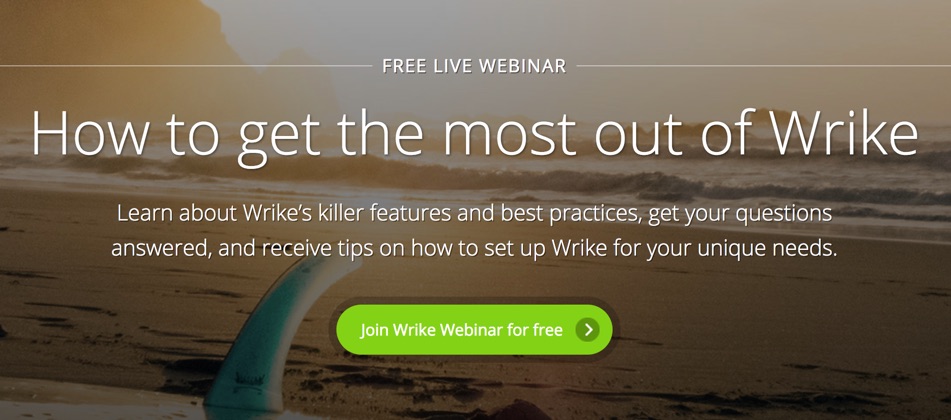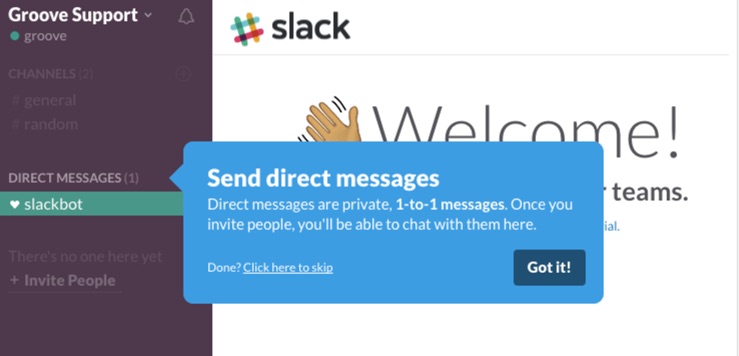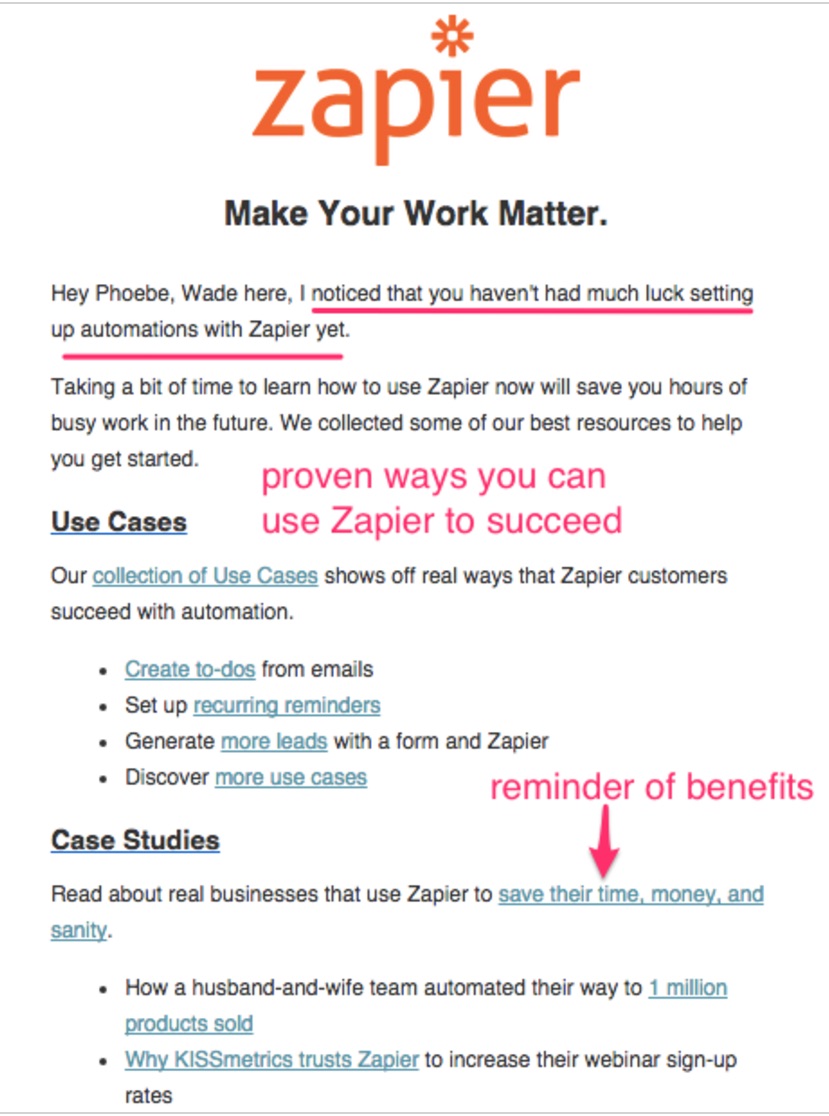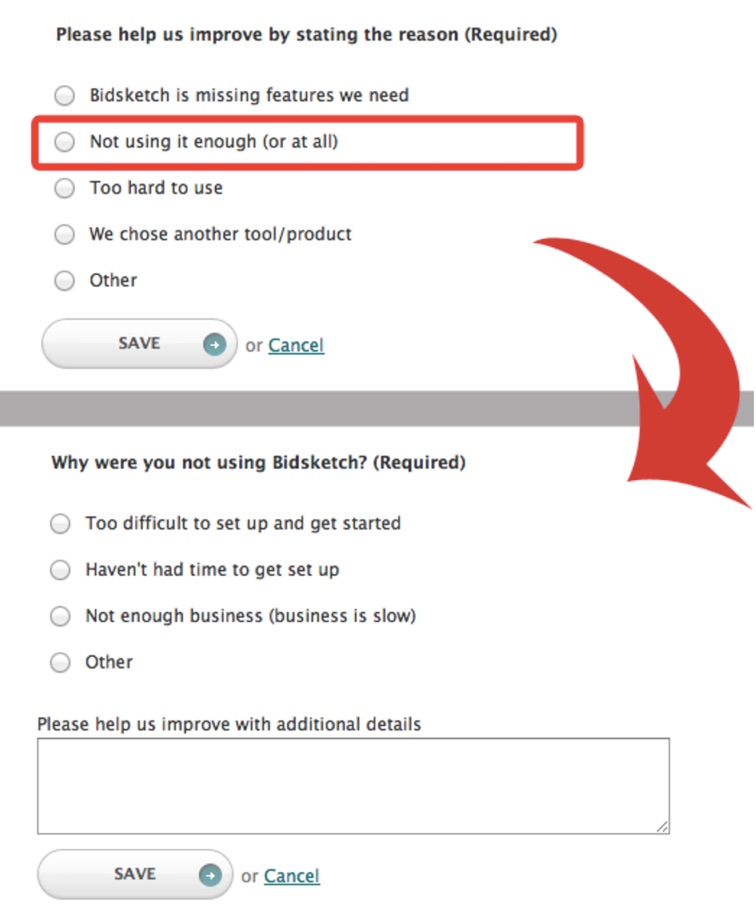Ever bought a survival kit?
It contains supplies to help you during a disaster. Every tool within the kit serves its purpose to sustain your life.
But what about your business? Does it have a survival kit?
Customer engagement is one of the tools to include. SaaS companies must engage with users for business survival and growth.
“Customer engagement can help answer some tough product and marketing questions. The key is to determine which parts of your product different users utilize, and to target users directly for primary market research,” says Guy Nirpaz, CEO and co-founder of Totango.
Your team can monitor user behavior to pinpoint friction points, correct product mistakes, and prevent unwanted cancellations. So pay attention to these five user behaviors below.
1. When Users Miss the Initial Onboarding Step
Teams spend weeks (sometimes months) nurturing leads into customers. Then, once the sale happens, some team members automatically move to the next prospect in line.
As a result, the new customer is left to navigate your platform alone and wrestles with how to solve their own problems. This is a lose-lose situation for everyone involved.
Your team’s time and effort around onboarding will determine the rest of the brand-customer relationship. It’s important to welcome customers, get them acquainted with your application, and show them how to gain value quickly.
The small wins count when onboarding customers. They subscribed to your service to receive a solution. If that goal isn’t achieved, you may receive negative feedback from an irate customer, or worse, a cancellation notice.
“Keeping motivation high is especially crucial if your product’s activation event is inherently difficult or time-consuming. It’s much easier to ask people to complete one small thing at a time than to make one giant commitment,” writes Julia Chen, blog editor at Appcues.
Study your onboarding analytics to track users’ sessions per day and the in-app milestones completed. You want to detect inactivity early.
If you notice customers need extra help, screen overlays are an effective way to guide customers in the right direction. Check out this example from Slack.
Welcome your new customers with open arms. Give them an extra boost of support to see the value in your product.
2. When Users Remain Inactive in Your Platform
Because of our ability to form habits, people are somewhat predictable. We might sit in the same seat on the bus or order the same latte from Starbucks every day.
So when customers begin to use our products and then stop consumption, we notice the change in their behavior. It’s especially noticeable when it adversely impacts growth.
Behavioral analytics tools like Kissmetrics uncovers when users stop logging into their accounts or when customers fail to open your customer success emails. Your team’s mission is to find the reason for their lack of engagement.
The causes for inactivity may include software difficulty, a shift in preferences, or even life distractions. More often than not, inactive users reflect your team’s inability to engage with the individual. You must take a proactive approach before the customer becomes disinterested.
Zapier sends its customers re-engagement emails. The company offers tools to help the user succeed and reminds the person about product benefits.
Take charge during customers’ inactive periods. Provide them with a compelling reason to interact with your platform again.
3. When Users Submit Negative Feedback
Negative feedback isn’t awful as some companies may think. It’s receiving no feedback that should frighten SaaS businesses.
When consumers are dissatisfied, they usually quit buying without telling you why. That’s more harmful because you don’t know how to improve your services. You’re left guessing about what to do next.
So welcome all feedback—the good, the bad, and the ugly. Consider it a competitive advantage to have all this information at your fingertips. Plus, it will help you spot new trends to stay relevant in this dynamic market.
“Don’t always assume that negative reviews can only be a disadvantage to your business. Be open to customer input and you might learn something about how your competitors do things right that you’re doing wrong,” states Forbes contributor Steve Olenski.
To analyze the feedback, tag each message with predetermined criteria, like product types or support issues. Then, comb through the comments for general themes of negativity. This technique will expose your priorities.
For instance, if customer service is the problem, you may need to analyze your response times and the quality of your messages.
Dimensional Research found that customers considered a customer service experience to be good when there was a quick resolution to the problem. So you could revamp the experience in a manner that meets (and exceeds) your customer’s expectations.
Negative feedback isn’t a setback. Transform customer frustration into business results.
4. When Users Avoid Training Resources
Trying something new often brings excitement and eagerness to learn. New customers want to know how to turn their brand new tool into a valuable asset.
It should concern your team when users aren’t actively engaging with your training resources. If you notice a decrease in your video replays, content hub page views, or ebook downloads, it’s time to examine the cause of the decline.
It may be that the educational materials aren’t conveniently accessible. Customers don’t know where to go for help.
Or customers may consider your content boring and too hard to digest. If that’s the case, try different types of training— customer webinars, mini-courses, and AMAs—to educate users about your product.
Wrike hosts live webinars to speak with their customers directly. It’s a chance for users to get their questions answered in real-time.

Take a second look at why customers avoid your resources. You might be standing in the way of customer success.
5. When Users Cancel Their Subscriptions
For some teams, it’s a dreadful experience receiving a cancellation notification from a customer. Questions flare up: What happened? What can we do better?
Before you bombard the customer with a slew of questions, work with your team to develop a process for handling all subscription cancellations. It will help you create a standard benchmark for evaluating every situation.
You shouldn’t dwell on cancellations. Instead, focus on their reasons for leaving. SaaS experts advocate that cancellations don’t equate to churn. So you still may have an opportunity to win back customers.
Use subscription cancellations as a tool to learn hard lessons from your team’s mistakes. Surveys are an effective method to collect this data.
“One of the best tactics that you can use to win back your cancelled customers is by using cancellation surveys, but just sending out a survey itself won’t provide a lot of results. Basic unplanned surveys will result in low response rates and inaccurate results,” says Wilson Peng, cofounder of YesInsights.
Developing a system for identifying the problem to find the real reason behind the cancellation. Experiment with asking different questions and conduct split testing on the best times to ask users to submit a cancellation survey. You may even want to test whether or not making the form field mandatory increases your response rate.
It’s always a good time to learn from your errors. Change your perception around cancellations by focusing on how you can improve.
A Watchful Eye
For your SaaS to survive (and thrive), customer engagement is an essential element to your business strategy. But it’s not enough to say it, your team must execute.
Monitoring user behavior offers insight on how to engage with customers. This newfound knowledge prepares your business for future disasters.
About the Author: Shayla Price lives at the intersection of digital marketing, technology and social responsibility. Connect with her on Twitter @shaylaprice.


